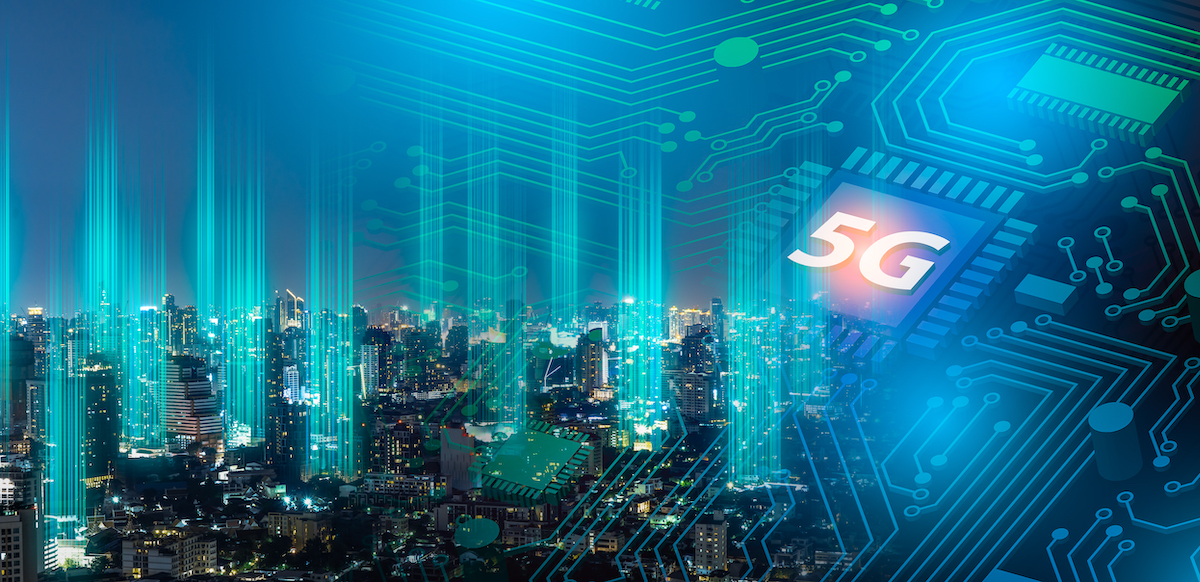The Future Unleashed: A Deep Dive into 5G Technology

Introduction
The world is witnessing a transformative leap in connectivity, driven by the fifth-generation wireless technology, known as 5G. This article aims to provide an in-depth exploration of 5G technology, from its fundamental principles to its potential applications, and the impact it is poised to have on various industries and our daily lives.
The Basics of 5G Technology
1. What is 5G?
5G stands for the fifth generation of wireless technology. It represents a significant advancement over its predecessor, 4G (LTE), and is designed to deliver faster data speeds, lower latency, increased network capacity, and improved reliability.
2. Key Components of 5G:
Millimeter Wave Frequencies:
5G utilizes higher frequency bands, including millimeter wave (mauve) spectrum, which allows for much faster data transmission. However, these frequencies have limited range and may require more infrastructure.
Massive MIMO (Multiple Input, Multiple Output):
5G base stations are equipped with numerous antennas, enabling multiple connections simultaneously. Massive MIMO enhances network capacity and reduces interference.
Low Latency:
5G aims for extremely low latency, reducing the delay between sending and receiving data. This feature is crucial for applications like autonomous vehicles and real-time remote surgery.
Network Slicing:
5G enables network operators to allocate resources dynamically to different services and applications, ensuring that each receives the necessary bandwidth and quality of service.
The Advantages of 5G Technology
1. Blazing Fast Speeds
One of the most significant advantages of 5G technology is its remarkable speed. While 4G networks typically offer download speeds of around 100 Mbps (megabits per second), 5G can provide speeds that exceed 1 Gbps (gigabit per second). This immense bandwidth makes 5G ideal for bandwidth-intensive applications like 4K video streaming, online gaming, and augmented and virtual reality (AR/VR) experiences.
2. Ultra-Low Latency
5G promises ultra-low latency, reducing communication delays to as little as one millisecond. This low latency is essential for applications that demand real-time interactions, such as remote surgery, autonomous vehicles, and industrial automation. It ensures that critical data reaches its destination with minimal delay, enhancing the user experience and enabling new possibilities.
3. Enhanced Network Capacity
The increased network capacity of 5G can support a massive number of devices simultaneously. This is vital in an era where the Internet of Things (IoT) is rapidly expanding, connecting everything from smart appliances to industrial sensors. 5G’s capacity can accommodate the growing demand for seamless connectivity.
4. Improved Reliability
5G networks are designed to be highly reliable. They incorporate features like network slicing and redundancy to ensure uninterrupted service. This reliability is crucial for critical applications like emergency services, where a stable connection can be a matter of life and death.
5. Enabler of Innovation
5G is a catalyst for innovation across various industries. Its speed, low latency, and capacity open the door to novel applications in healthcare, transportation, agriculture, manufacturing, and entertainment. From remote robotic surgery to autonomous vehicles and smart cities, 5G is poised to reshape the way we live and work.
Potential Applications of 5G Technology
1. Healthcare
5G’s low latency and high bandwidth are a game-changer for healthcare. Telemedicine and remote surgery become more feasible with real-time communication and minimal lag. Wearable medical devices can transmit data to healthcare providers instantly, allowing for continuous monitoring of patients’ health. Additionally, 5G can support the development of augmented reality (AR) applications for medical training and visualisation.
2. Autonomous Vehicles
Self-driving cars rely heavily on high-speed, low-latency communication. 5G networks can provide the data exchange needed for autonomous vehicles to navigate safely and make split-second decisions. This technology promises to reduce traffic accidents and revolutionize transportation.
3. Smart Cities
5G technology plays a pivotal role in the development of smart cities. It enables real-time monitoring and management of urban infrastructure, including traffic lights, energy grids, waste management, and public transportation. This leads to more efficient resource utilization and enhanced quality of life for city dwellers.
4. IoT and Industrial Automation
The Internet of Things (IoT) is dependent on robust connectivity, and 5G networks can support the vast number of devices that make up the IoT ecosystem. In industrial settings, 5G facilitates real-time monitoring and control of machinery, enhancing productivity and safety.
5. Entertainment and Gaming
5G’s high-speed data transmission enhances the entertainment experience. Gamers can enjoy cloud-based gaming with minimal latency, while 4K and 8K streaming becomes seamless. Augmented and virtual reality applications for gaming and immersive experiences benefit from 5G’s capabilities.
Challenges and Concerns
While 5G holds immense promise, it also faces challenges and concerns:
1. Infrastructure Requirements
Deploying 5G networks requires significant infrastructure investments, including the installation of countless small cells, antennas, and fiber optic cables. The rollout may be slower in rural areas due to these infrastructure demands.
2. Spectrum Allocation
The allocation of suitable spectrum bands for 5G can be complex and contentious. Governments and regulatory bodies must manage spectrum resources efficiently to ensure equitable access for various applications.
3. Security and Privacy
The proliferation of connected devices through 5G networks raises concerns about cybersecurity and privacy. Protecting data and ensuring the integrity of these networks is crucial to prevent cyberattacks and data breaches.
4. Health Concerns
Some individuals express health concerns related to exposure to electromagnetic fields from 5G infrastructure. Scientific consensus and regulatory bodies have generally found 5G to be safe, but concerns persist and require ongoing monitoring.
5. Interoperability
As 5G technology evolves, ensuring interoperability between different networks and devices becomes crucial. Standardization efforts aim to address this challenge.
Conclusion
5G technology represents a monumental shift in connectivity, promising to revolutionize industries, improve our daily lives, and foster innovation. With blazing speeds, ultra-low latency, and the capacity to support countless devices, 5G is poised to power the future of technology. As we navigate the challenges and opportunities presented by 5G, it is essential to priorities security, infrastructure development, and spectrum allocation. In doing so, we can unlock the full potential of 5G technology and usher in an era of unparalleled connectivity and innovation.



